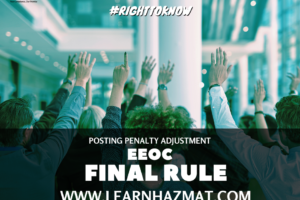A Look at Hazmat Classification Basics
A Background on Hazmat Classification Basics
New to Hazmat Classification or looking to get some basics? We've got you covered.
All materials or a substances that are identified by the Department of Transportation to pose an unreasonable risk to safety, health, and property, when transported in commerce are designated as hazardous materials.
Any company that ships or transports hazardous materials must:
Identify all hazardous materials and provide a classification for each hazardous material.
A classification requires you to:
Determine the appropiate identification number, proper shipping name and hazard classes or divisions for each hazardous material, and assign a packing group when required.
Hazard classes and divisions identify the types of hazards. Materials that pose multiple risks require more than one hazard class.
Hazmat Hazard Classes and Divisions
Class 1 – Explosives
Blasting agents
Materials with a projection hazard
Materials with a mass explosion hazard
Materials with predominately a fire hazard
Highly insensitive detonating devices
Materials with no significant blast hazard
Class 2 – Gasses
Gases toxic by inhalation
Flammable gases
Non-toxic, non-flammable
Oxygen
Class 3 – Flammable Liquids
Combustible liquid
Flammable liquids
Fuel/Oil
Gasoline
Class 4 – Flammable Solids
Flammable solids
Spontaneously combustible materials
Dangerous when wet materials
Class 5 — Oxidizing Agents and Organic Peroxides
Oxidizing Agent
Organic Peroxide Oxidizing Agent
Class 6 – Toxic and Infections Substances
Poisonous material
Biohazard material
Class 7 – Radioactive Material
Class 8 – Corrosive Material
Class 9 – Miscellaneous Dangerous Goods
Of course, these classes and sub-categories can require extensive research and knowledge. And the regulations and requirements are always changing. It is always best to approach hazmat classification with the proper set of knowledge and skills to ensure safety for everyone.
If you aren't sure or don't know – rely on someone who does!
How Does Hazmat Classification Effect Me?
If you or your employees perform a function that requires you to know even the basics about Hazmat Classification you are requiredn to have the proper training!
TCA offers a variety of training options in addition to long term training solutions. We can provide the online training modules which can be loaded into your learning management systems, without any individual user license fees. Your training modules will be updated as the regulations change.
If you are interested in learning more about this and other training solutions we can provide, contact us today!



